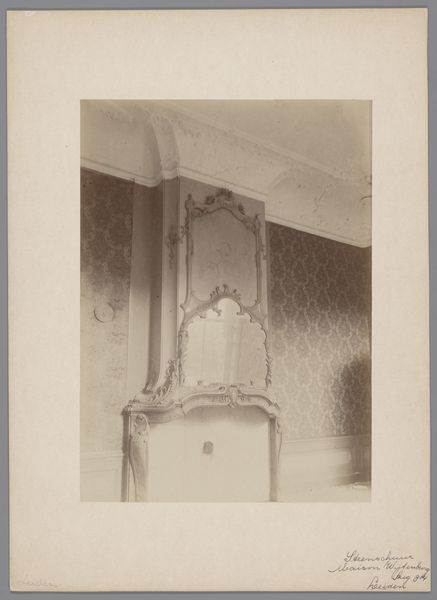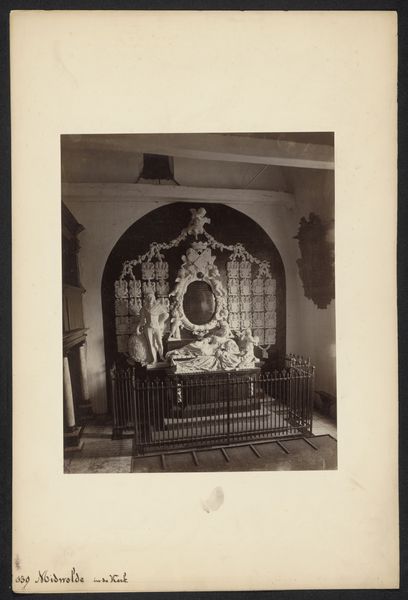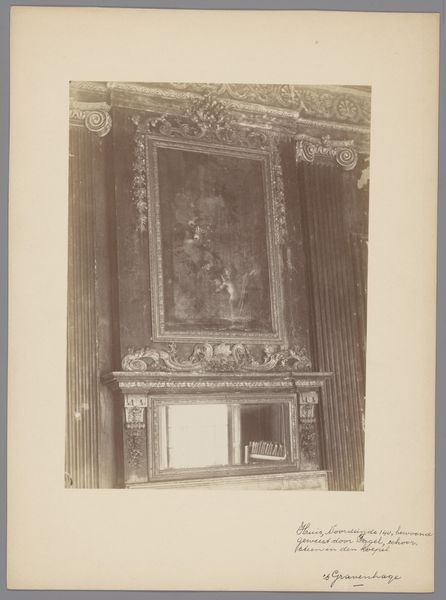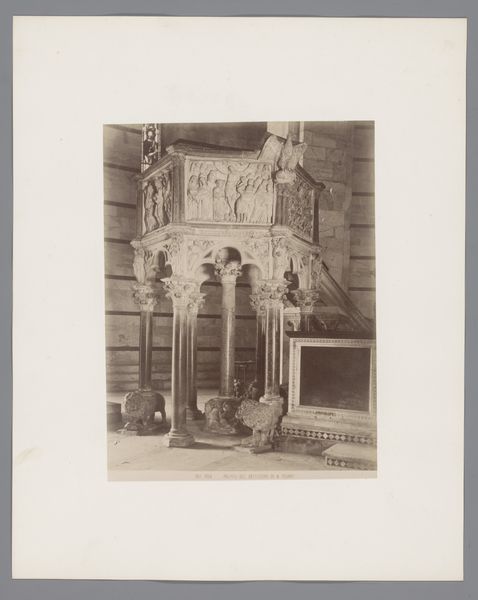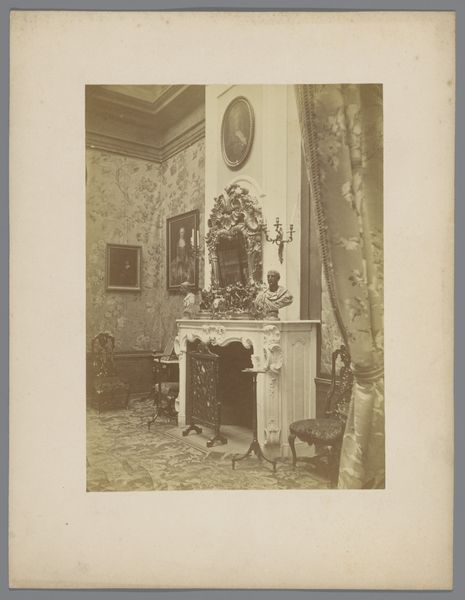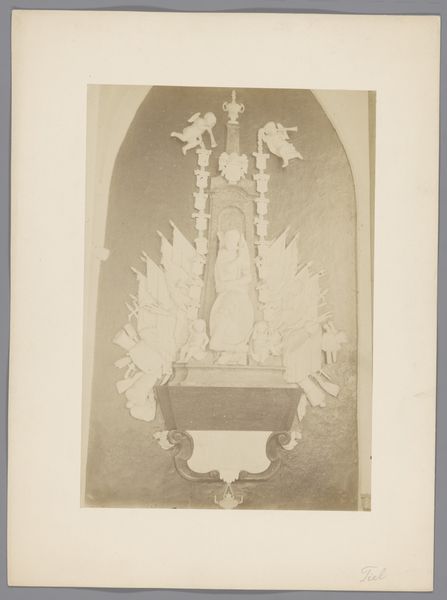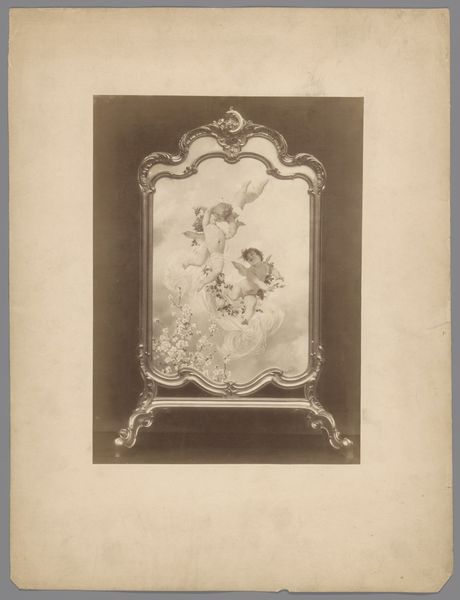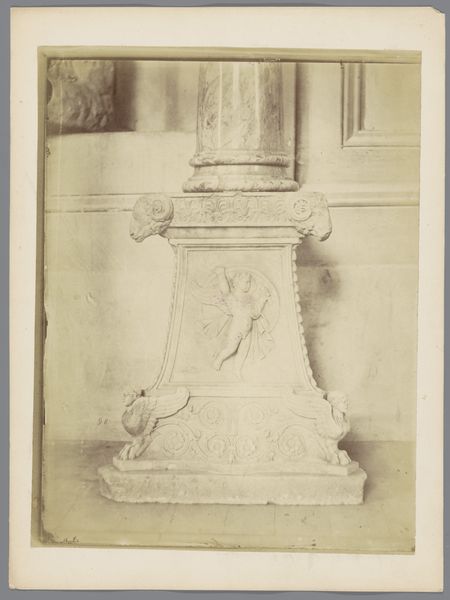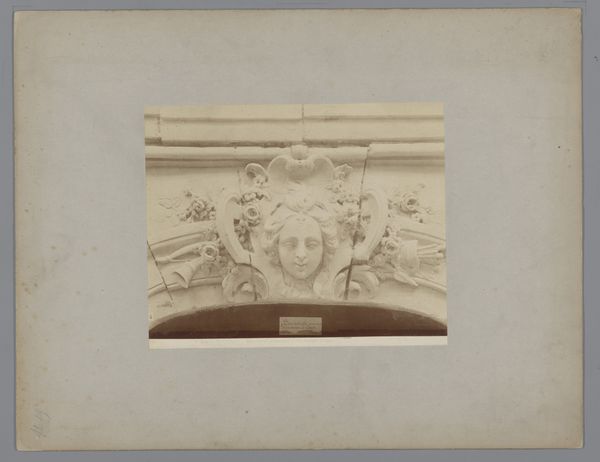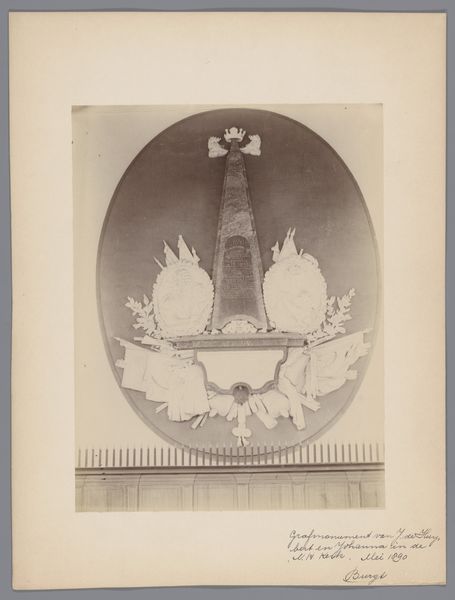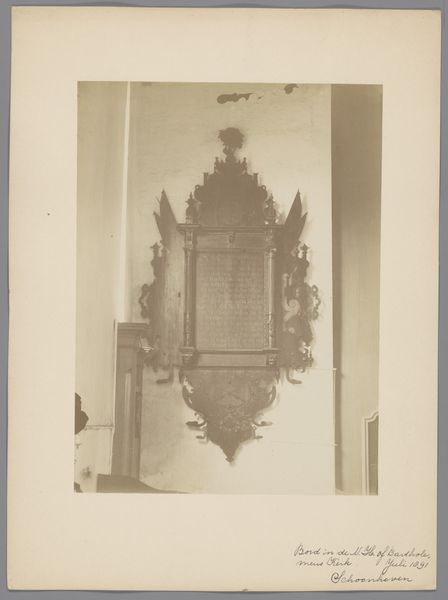
Dimensions: height 234 mm, width 174 mm
Copyright: Rijks Museum: Open Domain
Editor: So, this is a photograph from 1890 of the “Grave Monument of Pieter de Huybert in the Reformed Church at Burgh." The image seems to depict the monument as ornate and centrally positioned on a wall. I’m drawn to the bust within it, framed by a wreath. What strikes you about the piece? Curator: Immediately, I’m struck by the symbolic language employed in the memorial. The portrait bust within the wreath is a classical trope, isn’t it? Think of Roman emperors… the commemoration evokes authority and permanence, a connection to a lineage. Editor: Yes, it definitely has a Roman gravitas to it. And that frame, all swirling marble! Is there anything else in its visual construction that leaps out to you? Curator: Note the placement of the coat of arms – that heraldic imagery so prevalent in memorial art. It visually cements family identity, echoing claims of lineage and status across generations. And consider the cherubic figures. Do they appear celebratory, perhaps representing piety? Or do they indicate something else? Editor: Good point! They could symbolize the soul's ascent to heaven. I guess the symbolism does many things at once: status, remembrance, and maybe faith. Curator: Exactly! The monument acts as a vessel for cultural memory. Visual signifiers encode meaning about social hierarchies, familial legacy, and the deeply ingrained human need to negotiate mortality through commemoration. Editor: Looking at the monument with these different symbolisms in mind gives a fresh perspective on the artwork! Curator: Indeed. A richer understanding of these layers adds to an increased understanding.
Comments
No comments
Be the first to comment and join the conversation on the ultimate creative platform.
